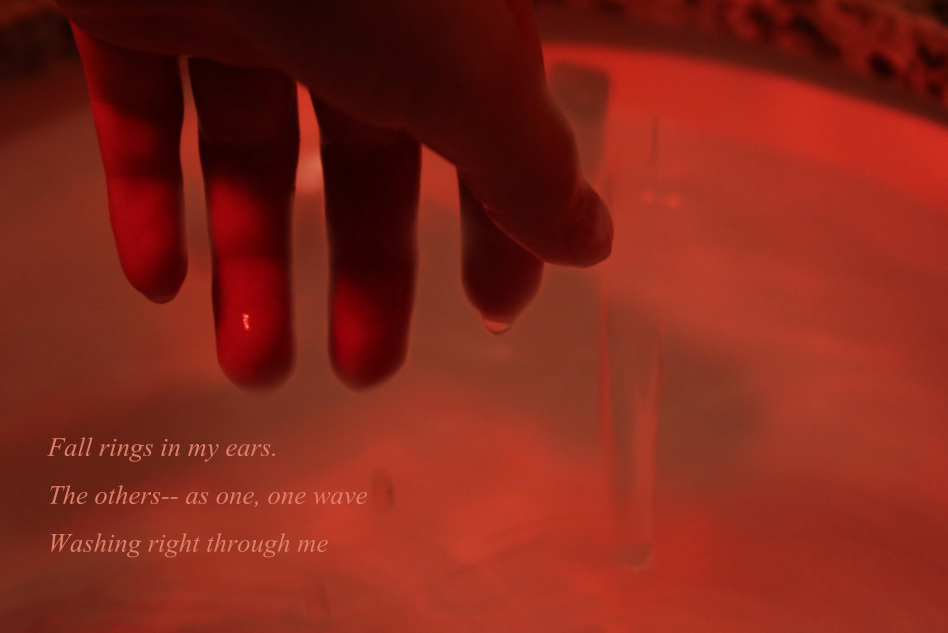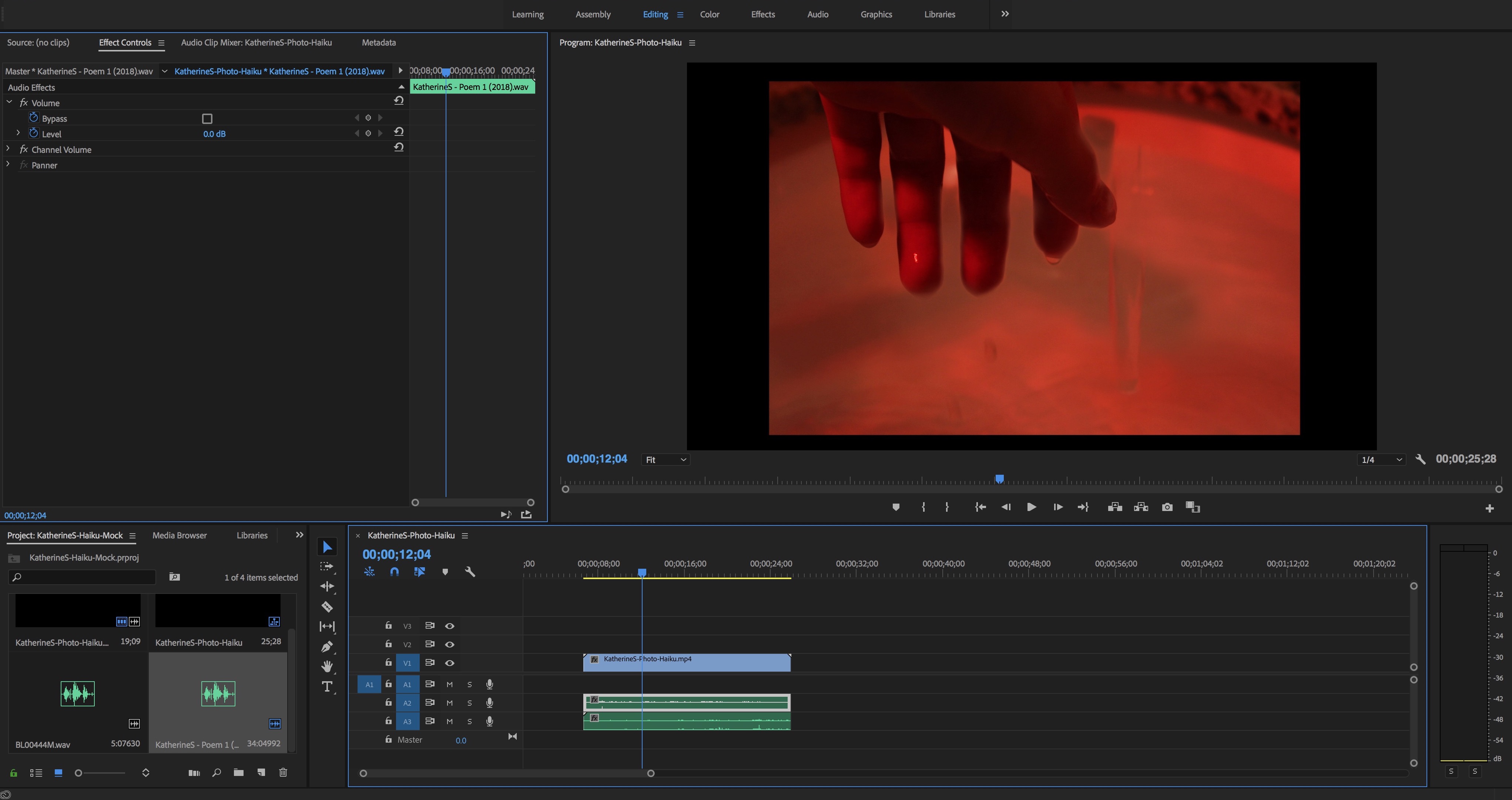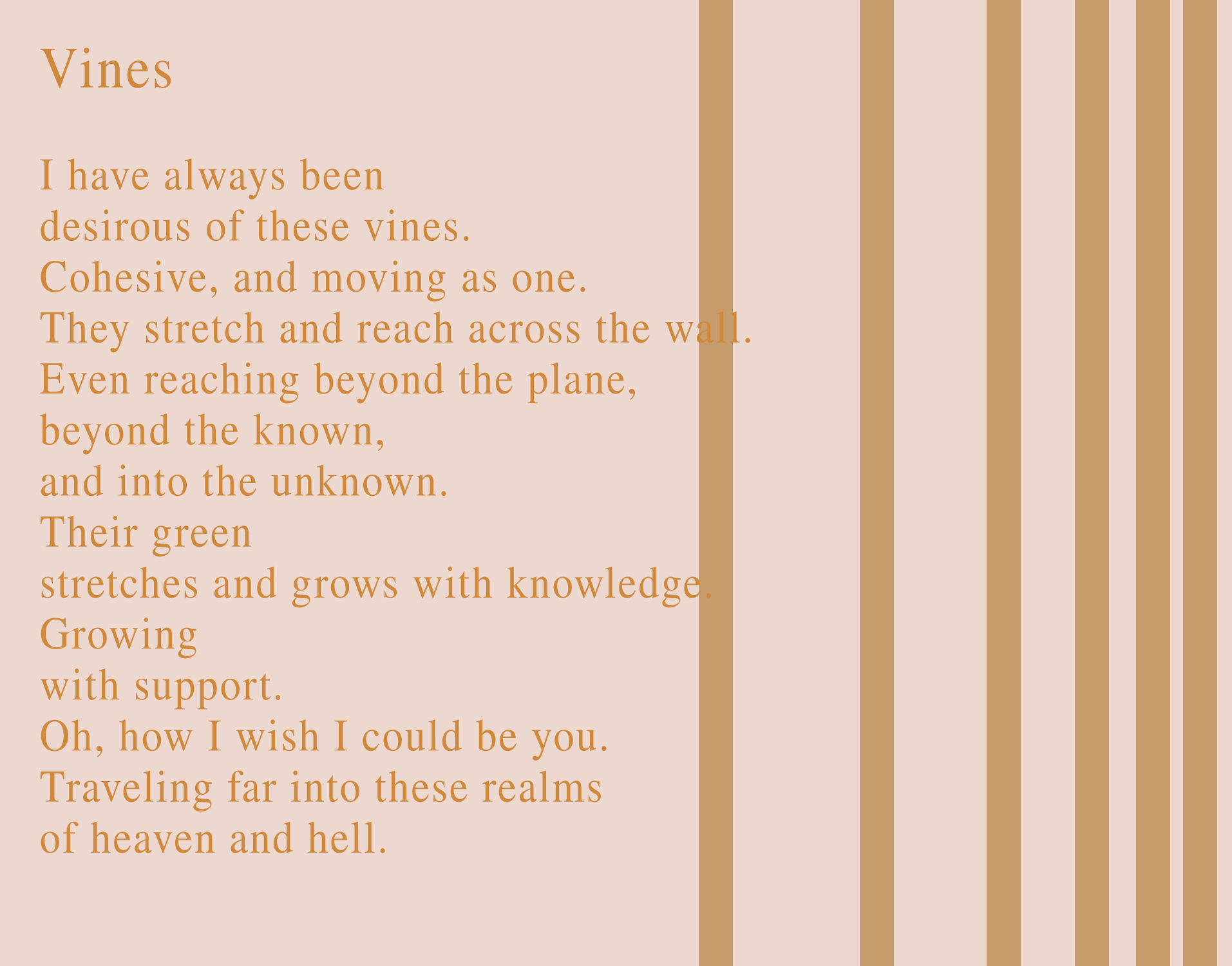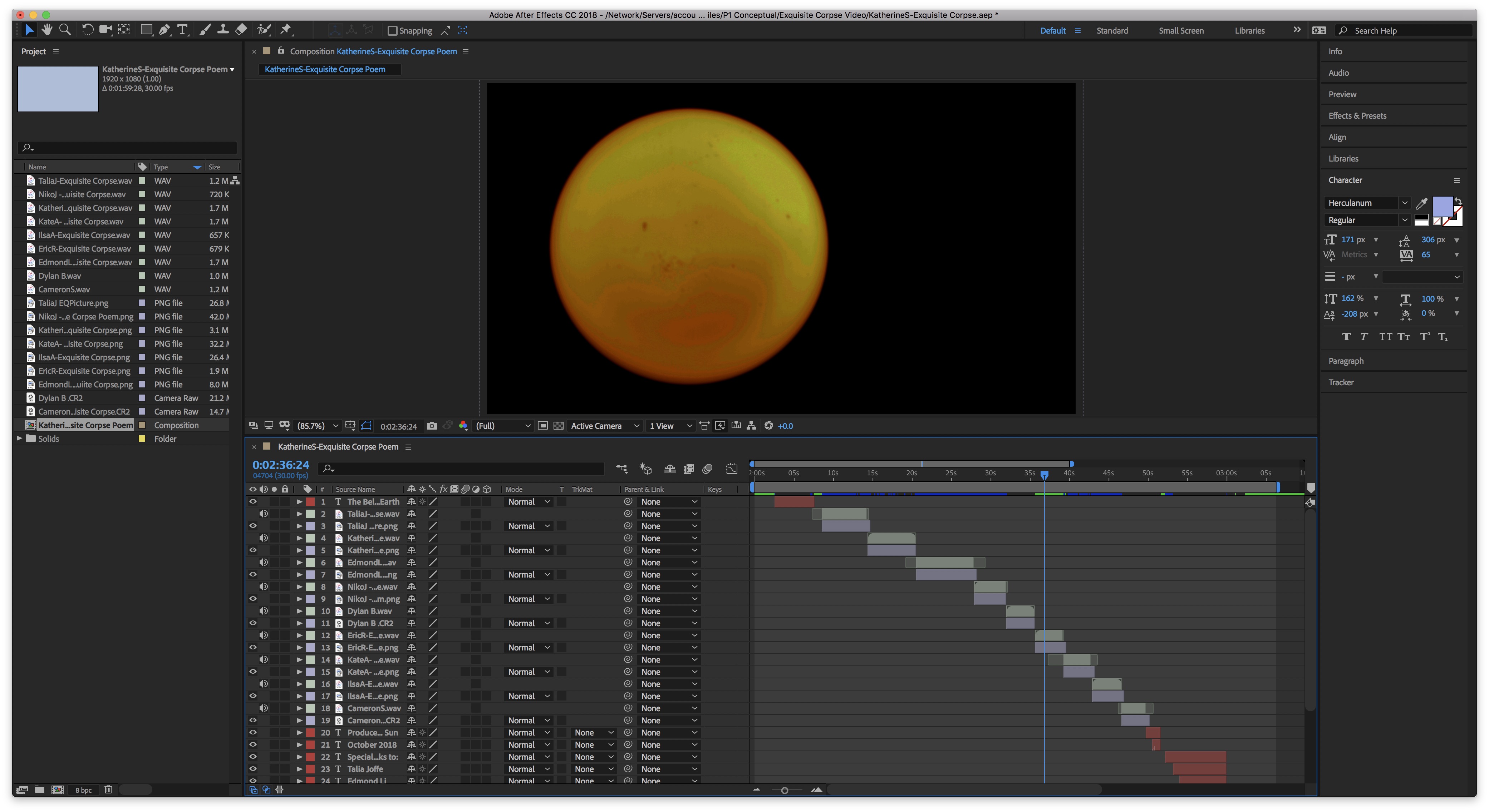Haiku
I created a Haiku to embody the following statement: I am exploring the feeling of envy through the experience of religion.

Photo Haiku: Envy by Katherine Sun
In the poem, religion is suggested through the shadow of a cross in the water, as well as the double metaphor in the poem of sound waves and water waves which represent the unison and community of religious groups. In turn, these objects influence and symbolize the speaker’s feeling of envy because they are alone and not united with others.
Fall is used to capture the somber feelings associated with isolation as the world seems to evolve without the individual. The red captures the color of fall and the anger of the speaker.

During the production, I gained insight of the complexity and process that goes behind conceptual art and writing. I came to value the process of producing a digitalized piece that combined writing and photography. I also valued the opportunity to learn Adobe Premier in order to edit a video in a way that complimented the overall tone of the poem.
More on Poetry
In English, the poetry unit brought out the creative, conceptual minds of students. After writing a Haiku, we experimented with longer poems.
 Lukewarm, Intention Statement:
Lukewarm, Intention Statement:
In “Lukewarm,” I am exploring the feeling of confliction and helplessness through the experience of self-observation.
The speaker is an individual confused about their identity and who they are perceived to be. The colors of “red” and “blue” can be interpreted as the conventional colors associated to male and female gender, suggesting that the speaker is conflicted about their gender-identity. In the poem, the speaker appears to be conflicted by asking questions of what they see and what they believe. In between the moments of confliction, the speaker battles between resignation and attempting to pinpoint who they are. Thus, their attitude shifts between restless debate and partial acceptance of their current state of being since they are ultimately unable to find the proper “labels” for themselves. The attitude shifts through the usage of varying end-stops, personification, and symbolism.
The first two lines begin the poem in a question. With no context, it overwhelms the audience right off the bat, emulating the speaker’s feeling of overwhelming confliction. The lineation emphasizes the two parts of the question to be regarded on their own, while the repetition of “reflection” and “recognition” in flipped placement creates confusion. Soon after, the following lines are in short length. Contrasting the lengthy lines before, it reads similar to the speaker’s transitioning feelings of overwhelming confliction to helplessness. By ending “I feel–” with an en-dash, it creates a pause where the speaker stops, perhaps to think, because they are confused as to how they feel. Unable to place a label on themselves, they resort to “different today.”, which is unspecific and leaves it open to interpretation. In the overall context, the speaker feels like they fit closer to one gender in comparison to how they felt the previous day. As the poem continues, colors are representative of feelings, and they are also personified. The purpose is to suggest the gender they feel to be and what they could be. In addition, the line, “The feeling mellow purple,” suggests she finds peace in the in-between of the two colors, where the range of purple is extensive (able to be more feminine or masculine, gender-fluid, similar to how purple ranges to be more red or more blue), and not in the strict classifications of what originally constitutes “purple.” Overall, the tone in the center of the stanza is softer (speaker in resignation) with the end-rhymes of “blue” (6, 8) and soft consonant sounds; compared to the hard consonant sounds of “recognition” or “reflection” the speaker speaks in the beginning with more deliberation. The transition of tone conveys the speaker’s acceptance of their conflict instead of continuing to question it. Finally, the last stanza personifies eyes as “playing mind games on me.” The personification of eyes shows they are controlling what the speaker perceives; Ultimately, this is to convey that they are unable to control their perception of who they truly are.

Vines, Intention Statement: I am exploring the feeling of denial through deliberation.
Exquisite Corpse
Exquisite Corpse means a complex body, typically referring to a body that is constituted of varying parts. For example, the head may be a cow, the body a human, and the feet a bunch of flowers. When applied to writing, the exquisite corpse method is used to accumulate a collection of words. Each writer adds an original thought after the other, and the sequence as such.
